Lord Keeper of the Privy Seal of Japan facts for kids
The Lord Keeper of the Privy Seal of Japan (called Naidaijin in Japanese) was a very important job in the old government of Japan. This person was a direct, personal advisor to the Emperor. They were also in charge of keeping the special Privy Seal of Japan and State Seal of Japan. These seals were like official stamps used by the Emperor.
This important job was stopped in 1945, right after World War II. The modern office of the Lord Keeper of the Privy Seal was different from an older job with the same name.
Contents
History of the Lord Keeper's Role
Starting the Modern Office (Meiji Period)
The modern job of the Lord Keeper of the Privy Seal began in 1885. This was after the Meiji government created the Japanese Cabinet. Even though the Cabinet was formed, the Lord Keeper was separate from it.
The Lord Keeper's main role was to be a direct and personal advisor to the Emperor. They also managed important imperial papers, like official orders and announcements from the Emperor. Requests sent to the Emperor and the court were also handled by this office.
In 1907, the job became even bigger. It was renamed the Office of the Lord Keeper of the Privy Seal (Naidaijin-fu). More staff were added, including a chief secretary, three secretaries, and six assistants. This was because the workload increased as older, influential advisors (called genrō) passed away.
Growing Power (Shōwa Period)
When Emperor Hirohito began his rule in 1925, the Lord Keeper's job became much more powerful. This happened partly because the role of the Prime Minister became less strong. Political arguments within the Japanese parliament, called the Diet of Japan, also helped the Lord Keeper gain more power.
The person holding this position could control who was allowed to meet the Emperor. They also managed what information reached the Emperor. This made the Lord Keeper a very influential figure in the government.
End of the Office
The position and the office of the Lord Keeper of the Privy Seal were officially ended on November 24, 1945. This happened after Japan's defeat in World War II.
Today, the special seals are looked after by the Chamberlain of Japan.
List of Important Officeholders
† died while in office.
| Portrait | Name | Start Date | End Date |
|---|---|---|---|
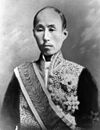 |
Prince Sanjō Sanetomi 三条 実美 (1837–1891) |
22 December 1885 | 18 February 1891† |
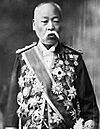 |
Marquis Tokudaiji Sanetsune 徳大寺 実則 (1840–1919) |
21 February 1891 | 12 August 1912 |
 |
Prince Katsura Tarō 桂 太郎 (1848–1913) |
21 August 1912 | 21 December 1912 |
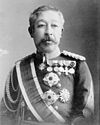 |
HIH Prince Fushimi Sadanaru 伏見宮 貞愛親王 (1858–1923) |
21 December 1912 | 13 January 1915 |
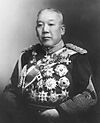 |
Prince Ōyama Iwao 大山 巌 (1842–1916) |
23 April 1915 | 10 December 1916† |
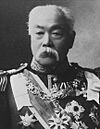 |
Marquis Matsukata Masayoshi 松方 正義 (1835–1924) |
2 May 1917 | 18 September 1922 |
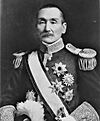 |
Viscount Hirata Tōsuke 平田 東助 (1849–1925) |
19 September 1922 | 30 March 1925 |
 |
Viscount Hamao Arata 浜尾 新 (1849–1925) |
acting (by the President of the Privy Council) 30 March 1925 |
|
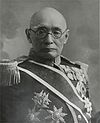 |
Count Makino Nobuaki 牧野 伸顕 (1861–1949) |
30 March 1925 | 26 February 1935 |
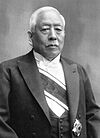 |
Viscount Saitō Makoto 斎藤 実 (1858–1936) |
26 February 1935 | 26 February 1936† |
 |
Baron Ichiki Kitokurō 一木 喜徳郎 (1867–1944) |
acting (by the President of the Privy Council) 6 March |
|
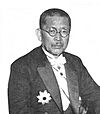 |
Yuasa Kurahei 湯浅 倉平 (1874–1940) |
6 March 1936 | 1 June 1940 |
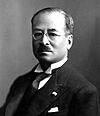 |
Marquis Kido Kōichi 木戸 幸一 (1889–1977) |
1 June 1940 | 24 November 1945 |
See also
- Lord Privy Seal
- Keeper of the Seals

